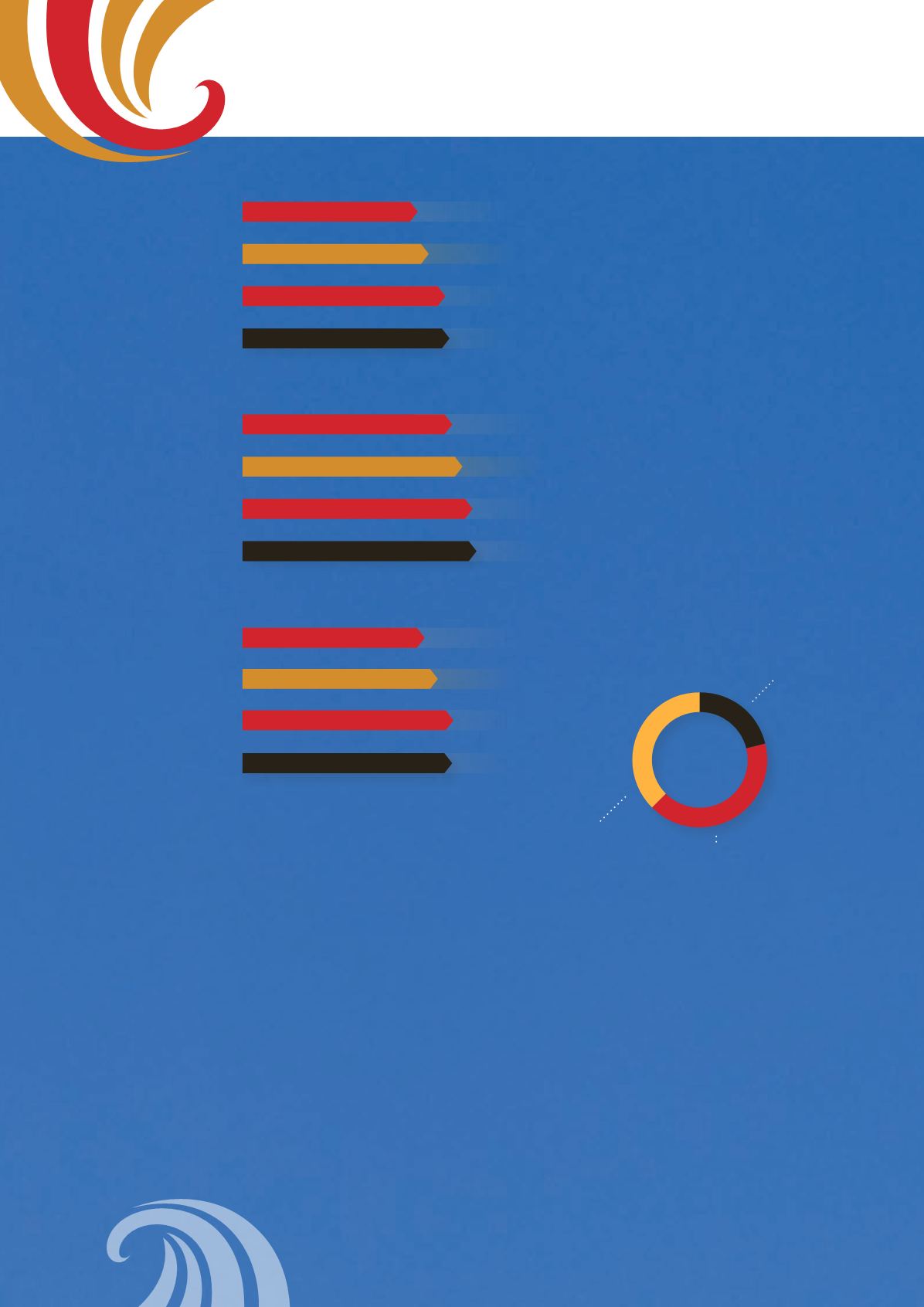
Extending pathways in
secondary and tertiary
During recent years, we have centered
our programme development efforts on
consolidating pathways of learning to
enable tauira to study with us continuously
from foundation to degree level. During
2012, our curriculum designers generated
significant momentum in this area through
the implementation of a range of bachelor
level degrees. However, more excitingly,
we also saw completion of our new
master’s degree: He Waka Hiringa – Master
of Applied Indigenous Knowledge. This
qualification now enables our tauira to
transition seamlessly from foundation
level to master’s level. He Waka Hiringa is
being delivered for the first time in 2013
and I look forward to seeing our master’s
graduates take their place as leaders of
our society.
ture
33%
Tauira with no
secondary qualification
30%
Tauira not working
prior to enrolment
17%
Tauira with disabilities
ngā
Our concern continued to grow for our
rangatahi during the year as the youth
unemployment rate remained high.
The future of our country rests with our
rangatahi and, at present, a good proportion
of them are unable to secure employment.
While we have been extending our
programming into higher levels of
education, we have also been planning
to extend our education into secondary
schools, including the addition of NCEA
qualifications. This will create a seamless
and integrated articulation pathway to
assist secondary school students and
their whānau.
While we work to provide more
opportunities at secondary level, we
also remain dedicated to helping engage
rangatahi in education and training at
tertiary level to provide them with the skills
they need to gain meaningful employment.
In pursuit of this goal, we made significant
progress with our Mātātahi Mataora (youth)
strategy during the year. Most notably,
we negotiated two key contracts with the
Ministry of Social Development to provide
youth services and to extend the range
Qualification completion rate
63%
2009
66%
2010
72%
2011
71%
2012
Retention rate
64%
2009
68%
2010
73%
2011
72%
2012
Course completion rate
73%
2009
76%
2010
79%
2011
80%
2012
Te pŪrongo 2012


